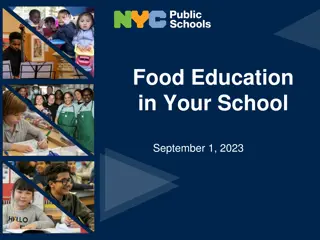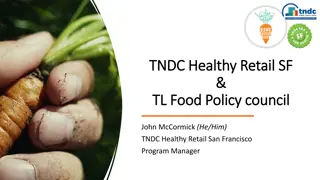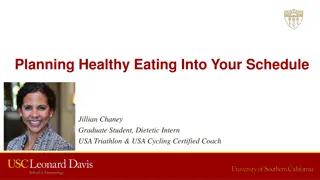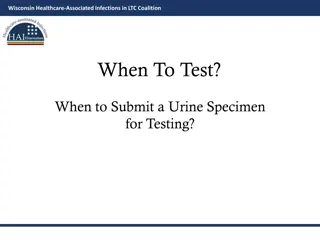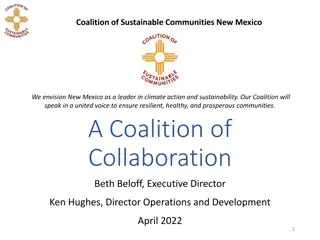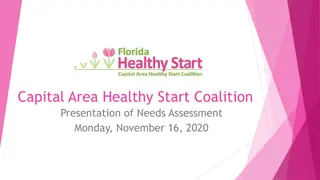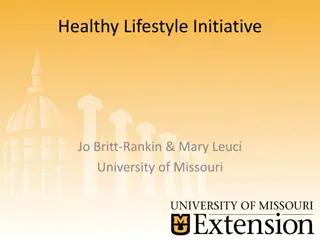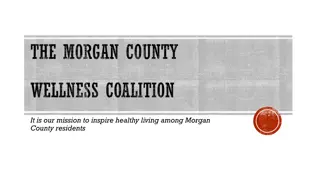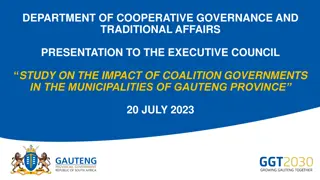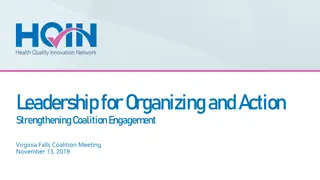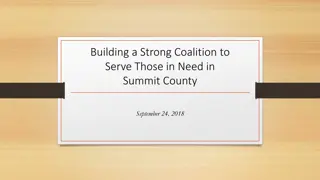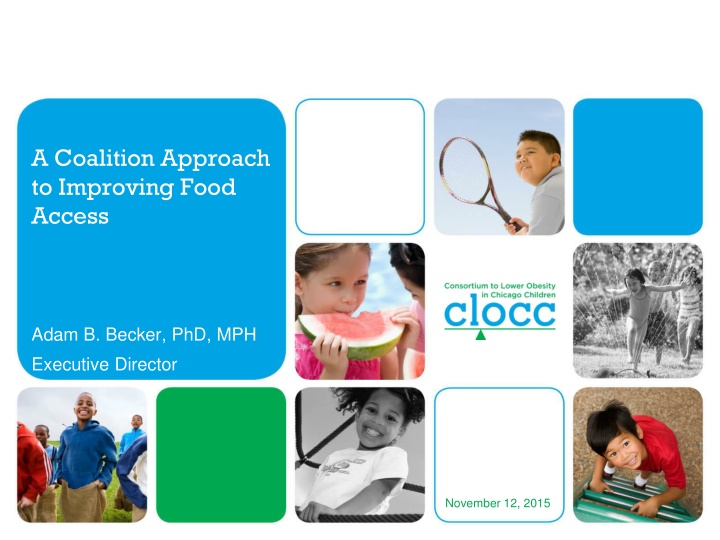
Approach to Enhancing Food Access Through Coalition Efforts
Explore the initiatives of CLOCC in improving food access through a coalition approach, focusing on addressing challenges, utilizing strategies like urban agriculture and farmers markets, and advocating for policy changes. Learn how non-service delivery organizations contribute despite limited resources, emphasizing health expertise and advocacy power to drive progress.
Download Presentation

Please find below an Image/Link to download the presentation.
The content on the website is provided AS IS for your information and personal use only. It may not be sold, licensed, or shared on other websites without obtaining consent from the author. If you encounter any issues during the download, it is possible that the publisher has removed the file from their server.
You are allowed to download the files provided on this website for personal or commercial use, subject to the condition that they are used lawfully. All files are the property of their respective owners.
The content on the website is provided AS IS for your information and personal use only. It may not be sold, licensed, or shared on other websites without obtaining consent from the author.
E N D
Presentation Transcript
A Coalition Approach to Improving Food Access Adam B. Becker, PhD, MPH Executive Director November 12, 2015
CLOCC Overview Founded in 2002 by a pediatrician at Ann and Robert H. Lurie Children s Hospital of Chicago Currently a network of more than 3,000 individuals representing more than 1,200 organizations in Chicago, across Illinois, and throughout the US, with international connections as well. Guiding Frameworks and Philosophies: Social ecological approach (addressing factors at multiple levels) Health Equity (working with communities experiencing disparities, building capacity, connecting in culturally appropriate ways) Strategy development (translating research into evidence-based practice for dissemination to partners Five Goals: Build a network Culturally appropriate interventions Public education Improving the science and practice of obesity Sustained funding for prevention Primary functions are to build professional networks, disseminate best practices, and push strategies that are promising/evidence-based but under- (or not at all) implemented
Challenges and Opportunities for Non-Service Delivery Organizations in Improving Food Access No authority over venues where food is purchased, procured, or otherwise made available Lack business relationships with wholesalers, licensing entities, food assistance programs No resources to purchase land, space, food Lack the economic/business acumen to develop consumer-based food delivery mechanisms HOWEVER Possess health expertise to convince partners of the importance of food access work Maintain productive relationships with many organizations that DO have the resources and bandwidth described above Advocacy power to urge public and private entities to focus on and advance food access Have a vast network of community-based organizations focused or willing to focus on food access Strong linkages to national experts for models, research, resources, etc. 3
Strategies to Improve Food Access (i.e., what can I talk about?) Food and beverage vending Machine Mobile Healthy food production Urban agriculture Community gardens Healthy food and beverage retail Farmers markets Small, independent community stores Restaurants Food system planning Consumer demand-building Best practice model dissemination Policy change and advocacy 4

